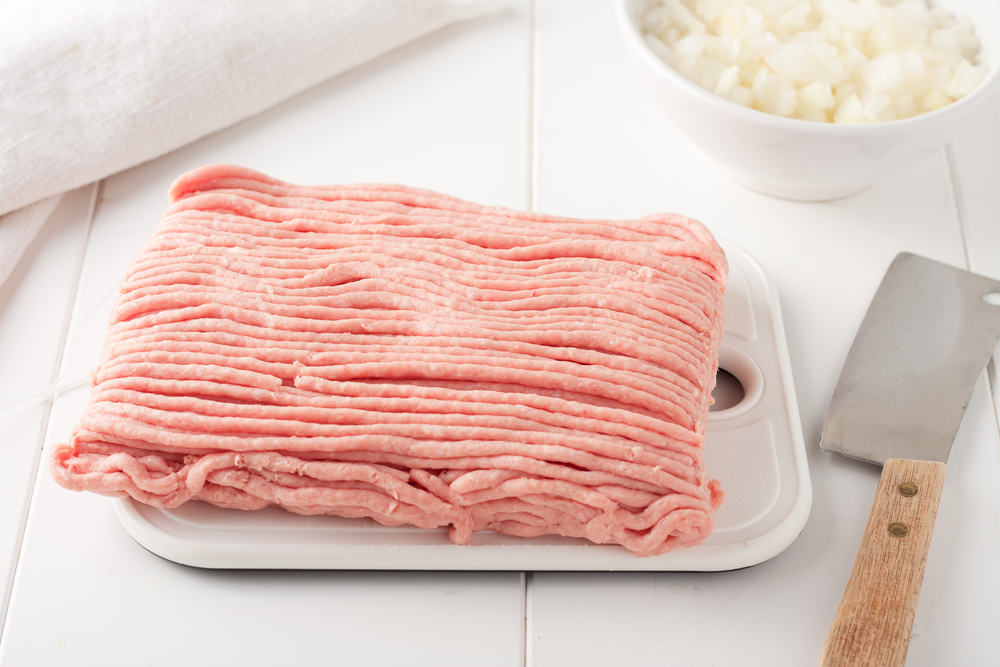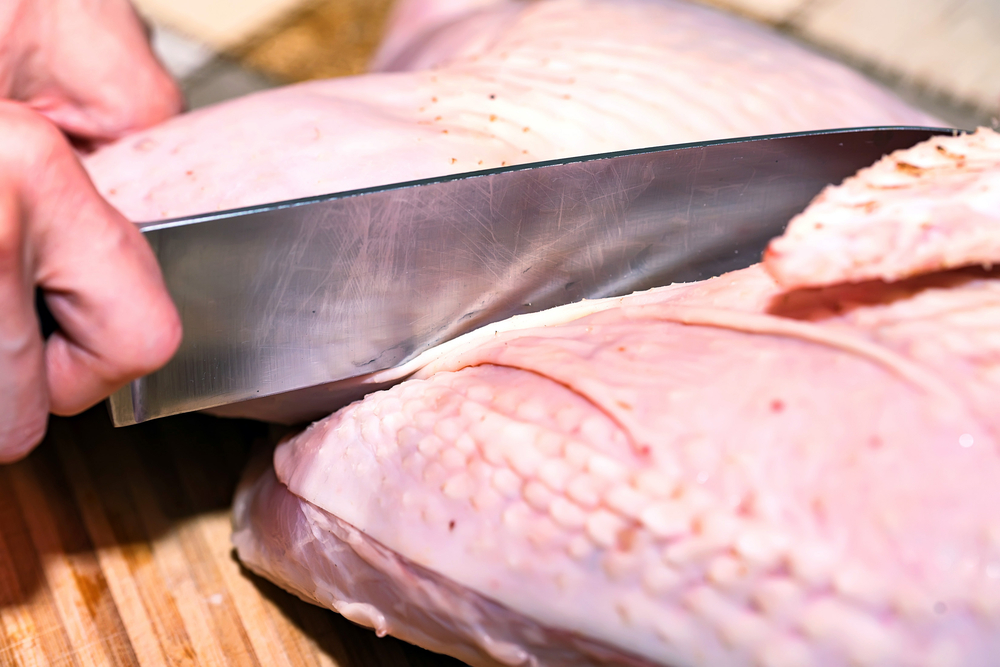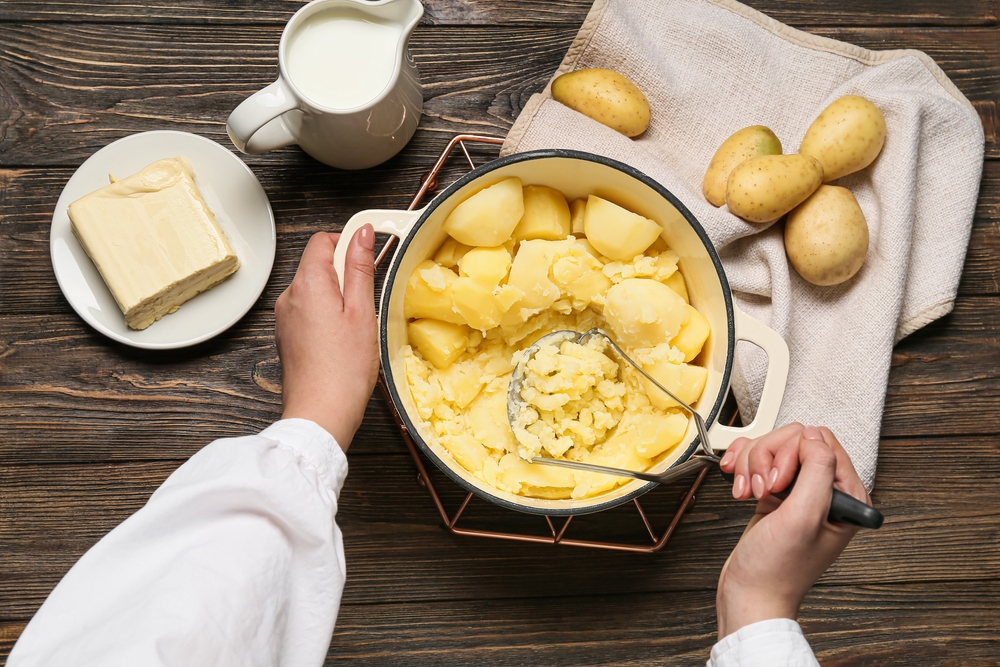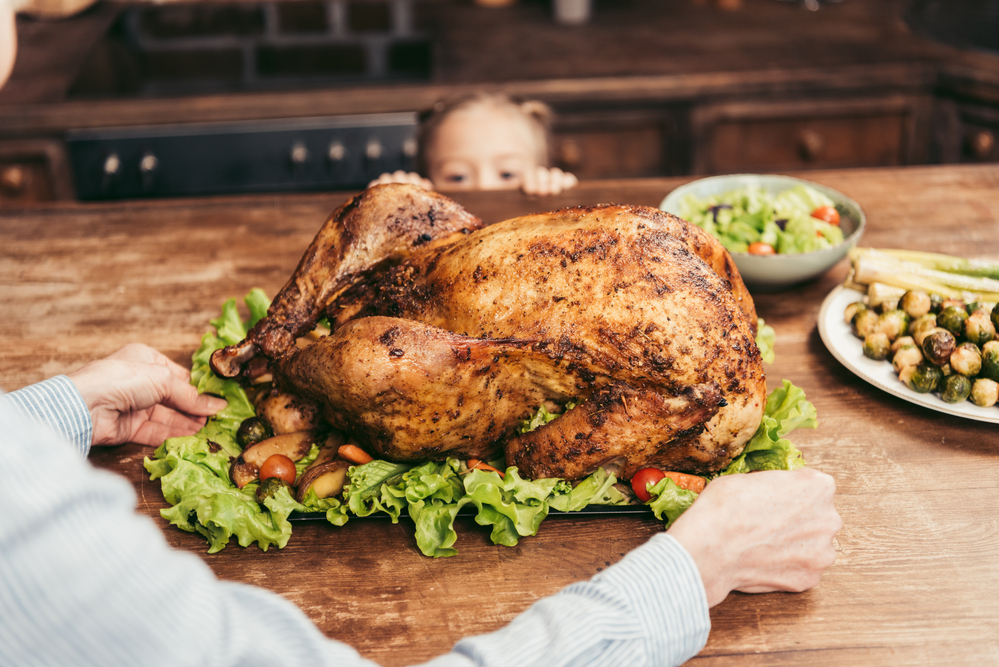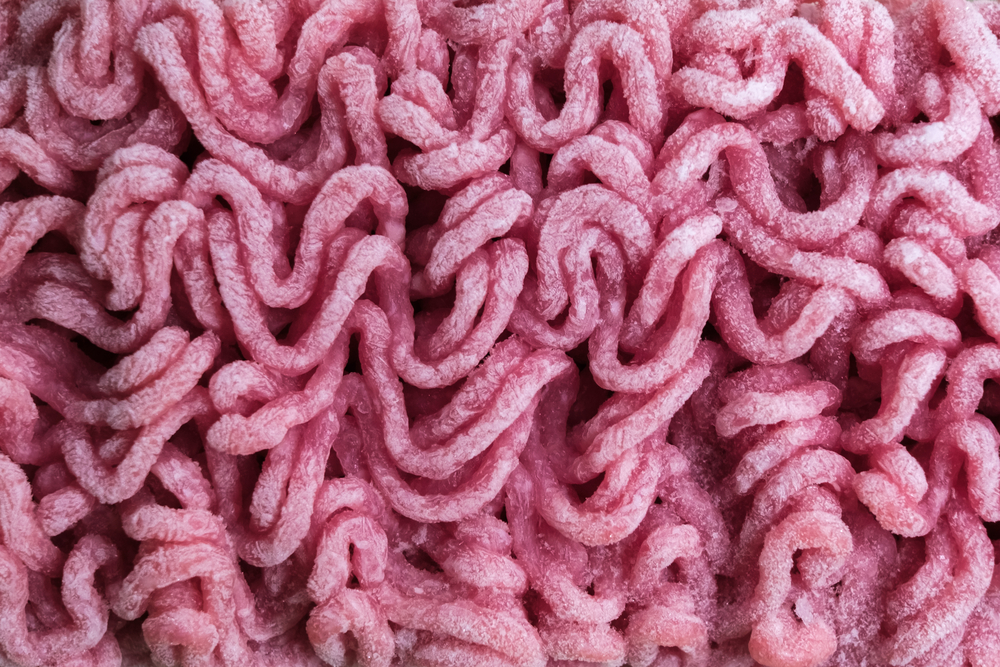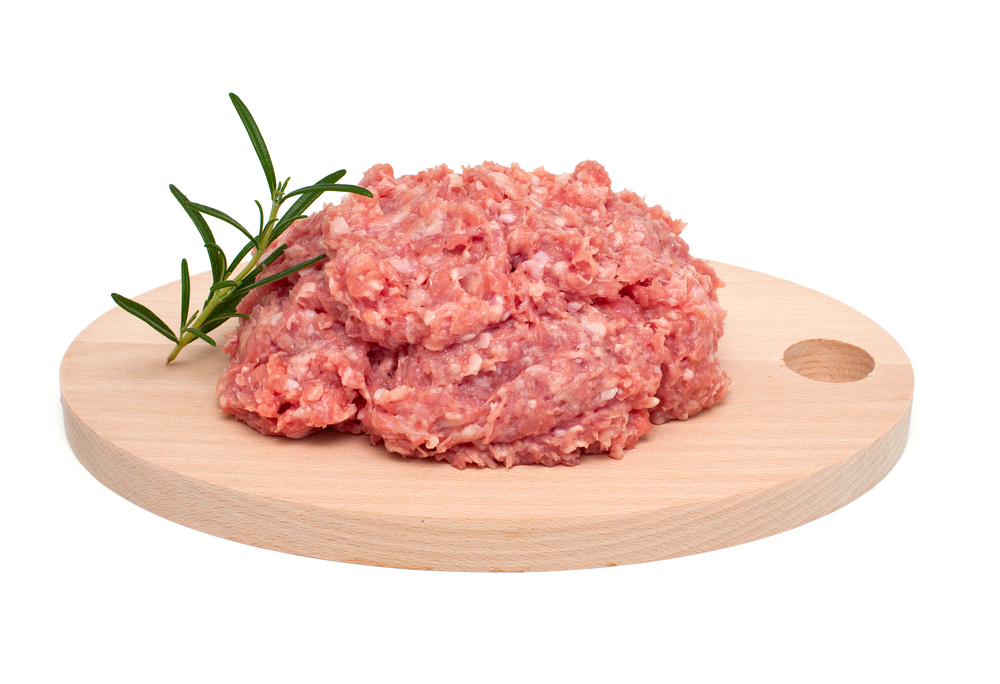As the holiday season approaches, many of us will be enjoying delicious meals with our loved ones. One staple of these meals is gravy, which can be a delicious addition to mashed potatoes, turkey, and other dishes.
However, reheating gravy can be a bit tricky, as it can easily become overcooked or lose its flavor. In this article, I will share some tips on how to reheat gravy on the stove so that it maintains its consistency and flavor.
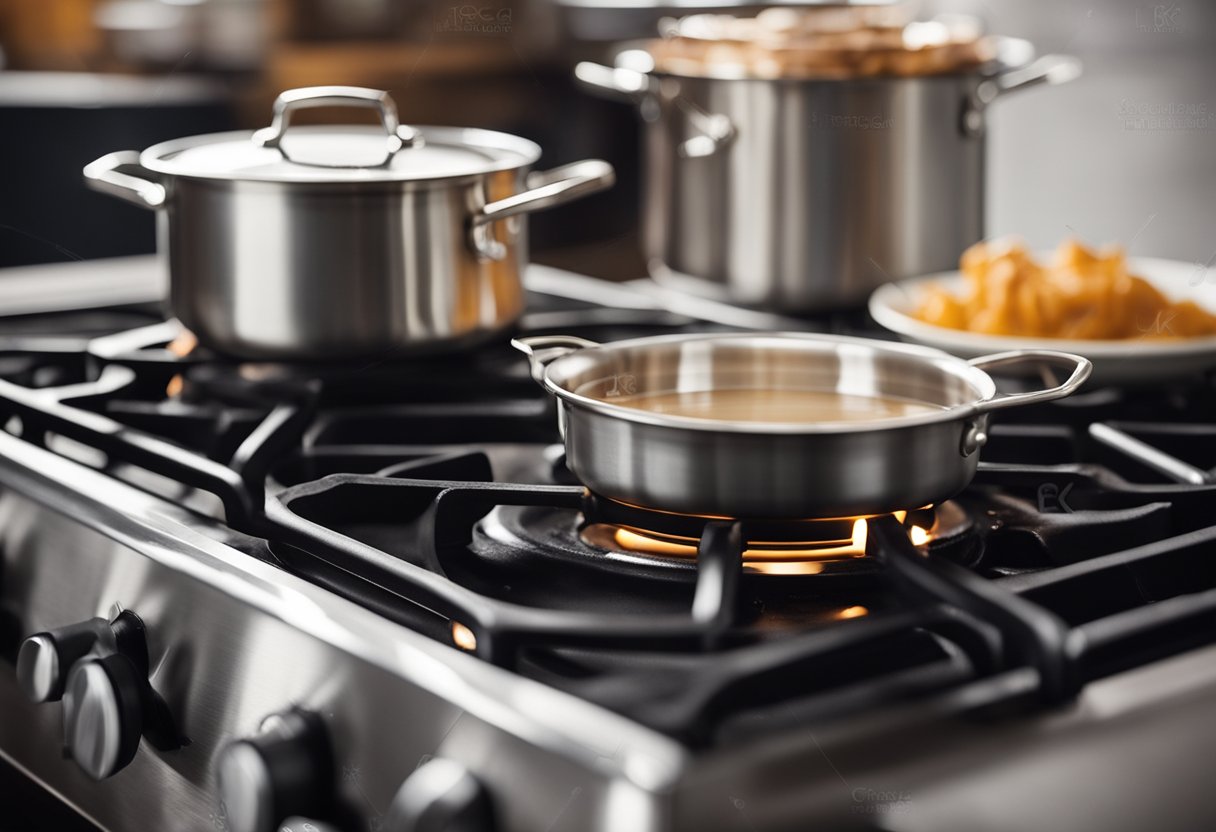
Understanding the basics of reheating gravy is essential to ensure that it tastes as good as it did when it was first made.
Before reheating, it’s essential to take the time to properly store the leftover gravy, so it doesn’t spoil or become unsafe to consume.
Once you have stored the gravy correctly, you can begin the reheating process. There are several methods for reheating gravy, but using a stove is one of the most effective and straightforward ways.
Preparation before reheating is also crucial to ensure that the gravy reheats evenly and maintains its consistency. You will need to gather all the necessary ingredients and utensils before starting the reheating process.
In this article, I will guide you through the steps of reheating gravy on the stove, including the right saucepan to use, the best temperature to use, and how to maintain the gravy’s consistency and flavor.
Key Takeaways
- Properly storing leftover gravy is essential to ensure it doesn’t spoil or become unsafe to consume.
- Reheating gravy on the stove is an effective and straightforward way to maintain its consistency and flavor.
- Using the right saucepan, temperature, and stirring techniques can help ensure that the gravy reheats evenly and maintains its original flavor and consistency.
Understanding the Basics
When it comes to reheating gravy on the stove, there are a few basic principles that you need to keep in mind.
Whether you’re dealing with leftover gravy from a holiday meal or just looking to repurpose some extra sauce, the following tips will help you get the job done right.
Choose the Right Saucepan
Selecting the right saucepan is crucial to achieving the best results when reheating gravy on the stove. You want to choose a pan that is large enough to hold all of your leftover gravy without overcrowding it.
This will help ensure that the sauce heats evenly and maintains its consistency.
Adjust the Consistency
The consistency of your gravy can change when you reheat it, so it’s important to monitor it closely as it heats up.
If the sauce is too thick, you can add a little bit of water or broth to thin it out. On the other hand, if the sauce is too thin, you can add a little bit of cornstarch or flour to thicken it up.
Monitor the Flavor
Reheating gravy can also affect its flavor, so it’s important to keep an eye on it as it heats up. If the sauce tastes bland, you can add a pinch of salt or other seasonings to enhance the flavor.
If the sauce tastes too salty, you can dilute it with a little bit of water or broth.
Use the Right Ingredients
The quality of your ingredients can also affect the flavor and consistency of your reheated gravy. Make sure to use fresh, high-quality ingredients when making your gravy in the first place, and store any leftover sauce properly to ensure that it stays fresh.
When reheating the sauce, use the same ingredients if possible to maintain consistency and flavor.
By following these basic principles, you can ensure that your reheated gravy turns out perfectly every time. With a little bit of practice and attention to detail, you can transform your leftover sauce into a delicious addition to any meal.
Preparation Before Reheating
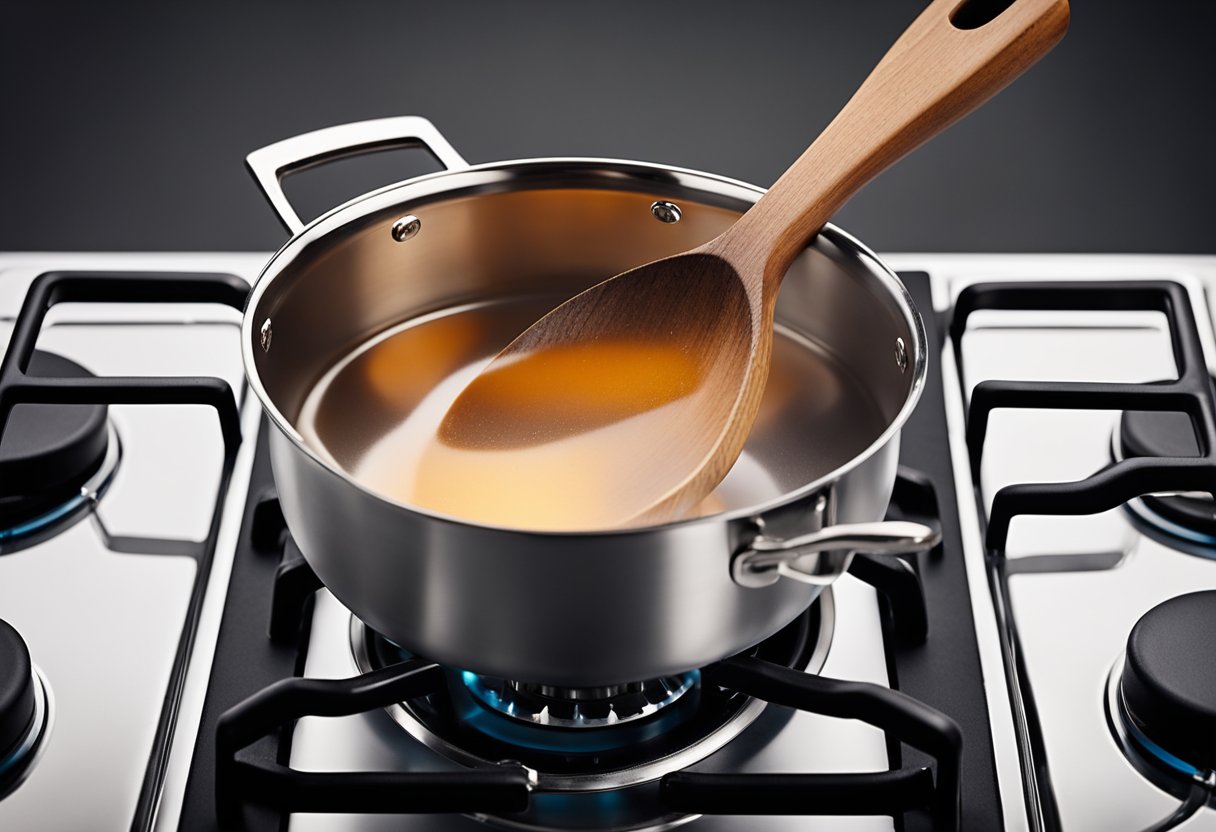
Before reheating gravy on the stove, it is important to properly prepare your leftover gravy to ensure that it is safe to eat and will reheat evenly. Here are some tips on how to prepare your gravy for reheating:
Storing Leftover Gravy
If you have leftover gravy, it is important to store it properly to prevent spoilage and bacterial growth.
To store leftover gravy, let it cool to room temperature before transferring it to an airtight container or wrapping it tightly with foil. Store the gravy in the refrigerator for up to 4 days or in the freezer for up to 3 months.
Defrosting Frozen Gravy
If you have frozen gravy that you want to reheat on the stove, it is important to defrost it properly to ensure that it reheats evenly.
The best way to defrost frozen gravy is to transfer it from the freezer to the refrigerator and let it thaw overnight.
If you need to defrost the gravy quickly, you can place the container of frozen gravy in a bowl of cold water and change the water every 30 minutes until the gravy is thawed.
Once your leftover or frozen gravy is properly stored and defrosted, you can start reheating it on the stove using one of the methods outlined in our other sections.
By properly preparing your gravy before reheating it on the stove, you can ensure that it is safe to eat and will taste just as delicious as it did the first time.
Reheating Gravy on the Stove
When it comes to reheating gravy, the stove is an excellent option. It allows for precise temperature control and even heat distribution, ensuring that your gravy is reheated evenly without any burnt spots.
Here are three methods for reheating gravy on the stove: using a saucepan, using a skillet, and the double boiling method.
Using a Saucepan
Using a saucepan is the most common and straightforward way to reheat gravy on the stove. Start by pouring the gravy into a saucepan and placing it on the stove over low heat.
Stir the gravy occasionally, making sure that it does not boil. Once the gravy is hot and steaming, turn off the heat and serve.
Using a Skillet
Using a skillet is another option for reheating gravy on the stove. Start by pouring the gravy into a non-stick skillet and placing it on the stove over low heat.
Stir the gravy occasionally, making sure that it does not boil. Once the gravy is hot and steaming, turn off the heat and serve.
Double Boiling Method
The double boiling method is a bit more complicated but is an excellent option for reheating gravy without burning it. Start by filling a pot with water and bringing it to a boil.
Reduce the heat to low and place a heat-resistant bowl over the pot. Pour the gravy into the bowl and stir occasionally until it is hot and steaming.
The double boiler method allows the gravy to be reheated slowly and evenly without the risk of burning.
No matter which method you choose, reheating gravy on the stove is simple and easy. Just remember to keep the heat low, stir occasionally, and avoid boiling the gravy.
With these tips, your reheated gravy will taste just as good as it did the first time around.
Maintaining Gravy Consistency
When reheating gravy on the stove, it is important to maintain its consistency. If the gravy is too thick, it can become lumpy and unappetizing.
On the other hand, if it is too thin, it can lose its texture and flavor. Here are some tips to help you maintain the perfect consistency when reheating gravy on the stove.
Stirring the Gravy
Stirring the gravy is critical to maintaining its consistency. It helps distribute the heat evenly and prevents the gravy from sticking to the bottom of the pan.
While reheating the gravy, stir it gently and consistently to prevent any lumps from forming. This process might take around 10-15 minutes, depending on the quantity of the gravy.
Whisking the Gravy
Whisking the gravy while reheating it can also help maintain its consistency. This technique helps break down any lumps that might have formed and creates a smooth texture.
Keep whisking the gravy as you reheat it to help it heat evenly. Once the gravy is simmering, you can reduce the heat and continue whisking it until it reaches the desired consistency.
Gelatin and Milk
If your gravy contains gelatin or milk, it is important to be extra careful when reheating it. These ingredients can cause the gravy to thicken quickly and become lumpy if not stirred or whisked properly.
To avoid this, start reheating the gravy on low heat and gradually increase the heat as needed. Keep stirring or whisking the gravy to prevent any lumps from forming.
In summary, maintaining the consistency of gravy when reheating it on the stove is crucial to ensure that it retains its texture and flavor.
By stirring and whisking the gravy as it heats up, you can prevent lumps from forming and create a smooth and appetizing gravy.
Ensuring Flavor and Quality
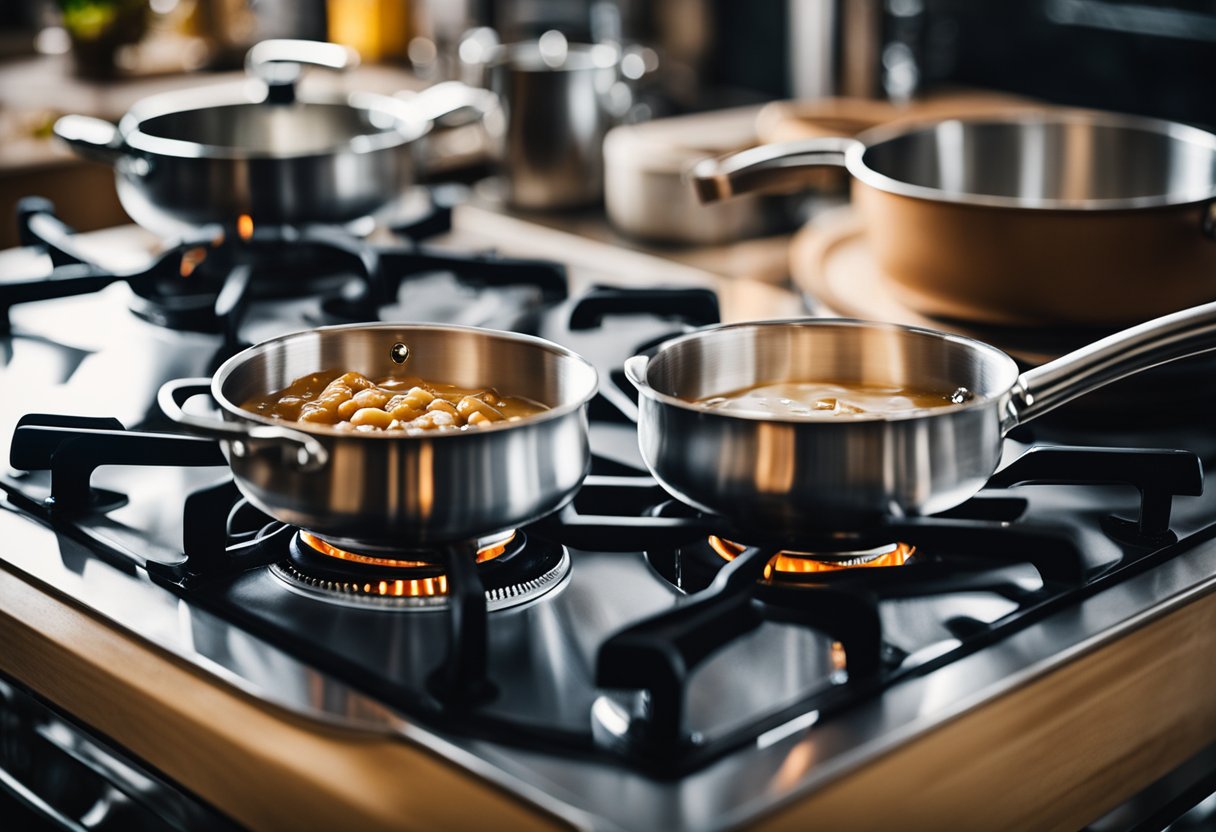
When reheating gravy, it’s essential to maintain its flavor and quality. Here are some tips to ensure that your gravy tastes just as good as it did when you first made it:
Taste Test
Before reheating, give your gravy a taste test. If it’s too salty or bland, adjust the seasoning as necessary. Add salt and pepper, herbs, or other seasonings to taste. Keep in mind that flavors can intensify when reheated, so don’t overdo it.
Reheat Slowly
To prevent your gravy from breaking or separating, reheat it slowly over low heat. This will help ensure that the flavors meld together and that the gravy maintains its smooth texture. Stir frequently to prevent scorching or sticking.
Add Liquid
If your gravy is too thick, add a little bit of liquid to thin it out. You can use chicken broth, water, or even milk depending on the type of gravy you’re reheating. Add the liquid slowly, stirring constantly until the desired consistency is reached.
Don’t Overheat
Overheating can cause your gravy to lose its flavor and quality. Be sure to remove it from the heat as soon as it’s heated through.
If you’re reheating gravy that’s been refrigerated or frozen, make sure it’s heated to at least 165°F to ensure food safety.
By following these tips, you can ensure that your reheated gravy is just as delicious as it was when you first made it.
Reheating Other Types of Gravy
When it comes to reheating gravy on the stove, the process is pretty much the same regardless of the type of gravy you’re working with.
However, there are a few things to keep in mind when reheating certain types of gravy to ensure that they retain their flavor and texture.
Reheating Sausage Gravy
Sausage gravy is a popular breakfast gravy that is often served over biscuits. To reheat sausage gravy, place it in a small saucepan or skillet over low heat.
Stir the gravy frequently as it heats up to prevent it from sticking to the bottom of the pan. If the gravy seems too thick, you can thin it out with a little bit of milk or chicken stock.
Reheating Turkey Gravy
Turkey gravy is a staple at Thanksgiving dinner, but it’s also a great addition to sandwiches and other meals throughout the year.
To reheat turkey gravy, transfer it to a saucepan or skillet and heat it over low heat. If the gravy is too thick, you can thin it out with a little bit of chicken or turkey broth. Be sure to stir the gravy frequently as it heats up to prevent it from burning.
Reheating Beef and Pork Gravy
Beef and pork gravy are often served with roasts and other hearty meals. To reheat beef or pork gravy, transfer it to a saucepan or skillet and heat it over low heat.
If the gravy is too thick, you can thin it out with a little bit of beef or pork broth. Be sure to stir the gravy frequently as it heats up to prevent it from sticking to the bottom of the pan.
Regardless of the type of gravy you’re reheating, it’s important to keep an eye on it as it heats up. If the gravy starts to boil or bubble, reduce the heat to prevent it from burning.
You can also add a little bit of water or broth to the gravy if it seems too thick or has dried out a bit in the refrigerator.
Overall, reheating gravy on the stove is a simple process that can help you make the most of your leftovers. With a little bit of patience and attention, you can enjoy delicious, flavorful gravy without having to start from scratch.
Alternative Reheating Methods
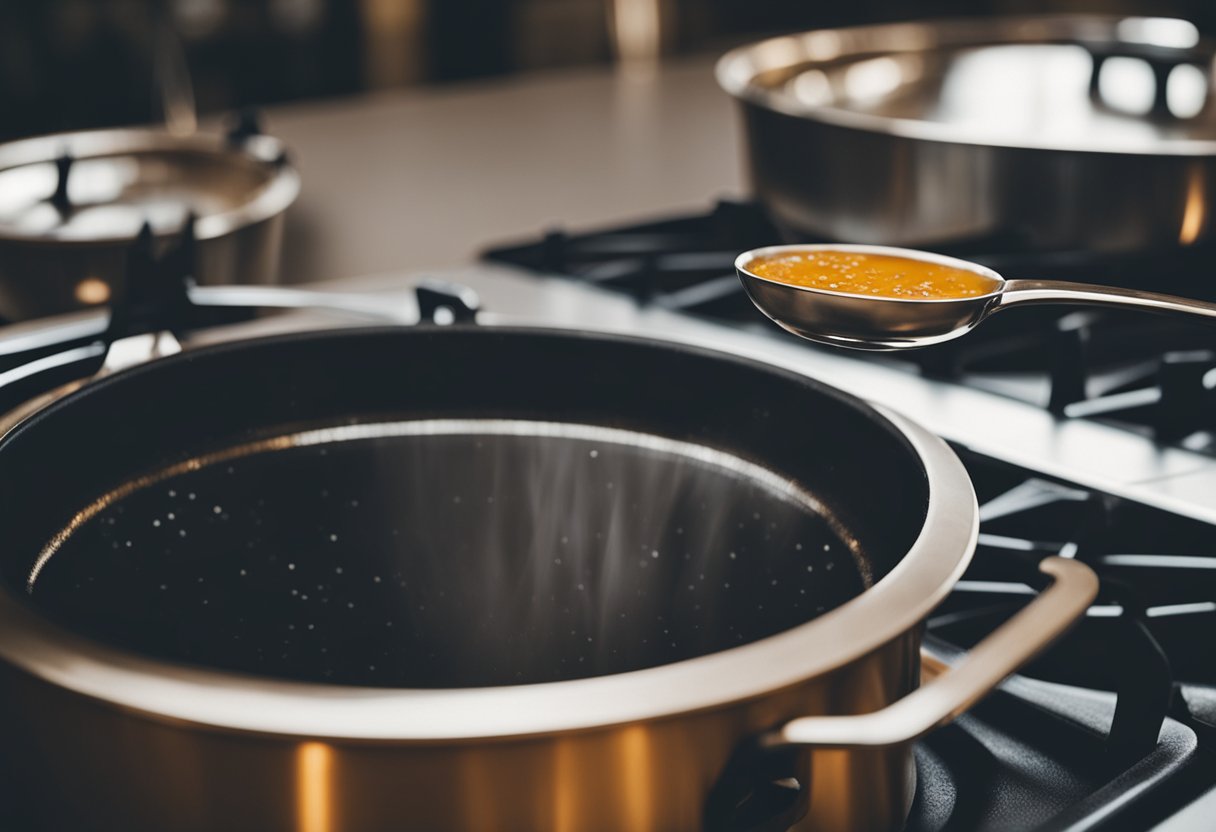
If you don’t have access to a stove, or if you’re short on time, there are alternative methods to reheat your gravy. While these methods may not produce the same results as stovetop reheating, they are still effective at bringing your gravy back to life.
Using a Microwave
The microwave is a quick and easy way to reheat your gravy. To do this, transfer your gravy to a microwave-safe bowl or container and cover it with a microwave-safe lid or plastic wrap.
Microwave your gravy on high for 30-second intervals, stirring in between each interval. Be careful not to overheat your gravy, as this can cause it to become lumpy or grainy.
Using an Oven
If you have a little more time, you can use your oven to reheat your gravy. Preheat your oven to 350°F (175°C) and transfer your gravy to an oven-safe dish.
Cover the dish with aluminum foil and place it in the oven. Heat your gravy for 10-15 minutes, stirring occasionally. Keep an eye on your gravy to make sure it doesn’t dry out or burn.
Using a Crockpot
Using a crockpot is a convenient way to reheat your gravy, especially if you’re serving a large crowd. To do this, transfer your gravy to a crockpot and set it to low heat.
Stir your gravy occasionally to prevent it from sticking to the sides of the crockpot. Your gravy should be ready to serve in 1-2 hours.
While these alternative reheating methods may not produce the same results as stovetop reheating, they are still effective at bringing your gravy back to life.
Choose the method that works best for you based on your time constraints and the equipment you have available.
Safety Precautions When Reheating
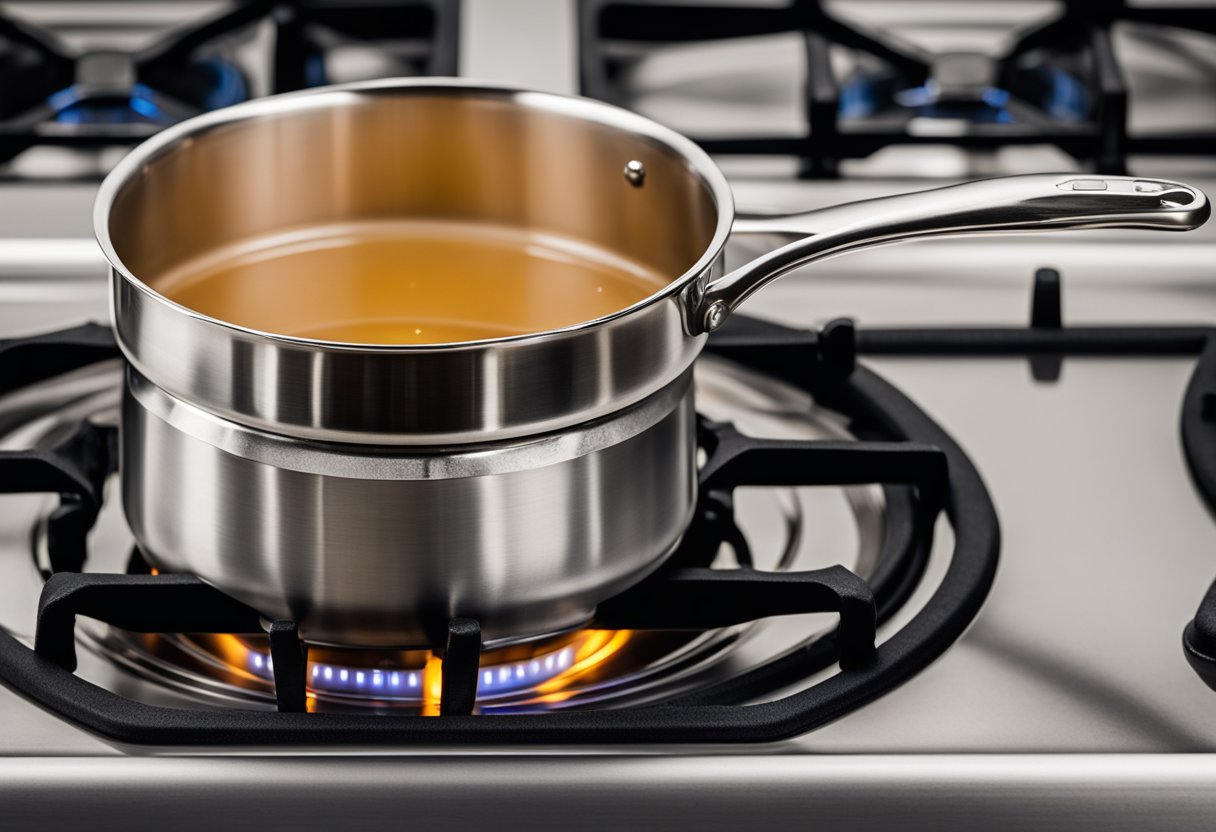
Reheating gravy can be a quick and easy way to enjoy leftovers, but it’s important to take safety precautions to avoid any potential health hazards. Here are some tips to keep in mind when reheating gravy on the stove:
Pay Attention to Temperature
One of the most important things to keep in mind when reheating gravy is the temperature. Bacteria thrive in the “danger zone,” which is between 40°F and 140°F.
To avoid any potential foodborne illnesses, make sure to reheat your gravy to a temperature of at least 165°F. Use a food thermometer to ensure that the gravy has reached the proper temperature.
Use Short Intervals
When reheating gravy on the stove, it’s important to use short intervals to avoid burning or scorching the gravy. Start with a low heat setting and gradually increase the heat as needed.
Stir the gravy frequently to prevent it from bubbling over or sticking to the bottom of the pan. If the gravy starts to boil, reduce the heat immediately to avoid scorching.
Avoid Overheating
Overheating gravy can cause it to break down and lose its texture. To avoid this, use low heat settings and frequent stirring during stovetop reheating.
Similarly, when using the microwave method, opt for shorter intervals and regular stirring to prevent hot spots within the dish.
Handle Leftovers Properly
Properly handling leftovers is crucial to avoid foodborne illnesses. Store leftover gravy in airtight containers and refrigerate it within two hours of cooking.
When reheating, make sure to use the gravy within four days of refrigeration. If you’re not sure if the gravy is still safe to eat, it’s better to err on the side of caution and discard it.
By following these safety precautions, you can enjoy reheated gravy without any worries.
Serving Reheated Gravy
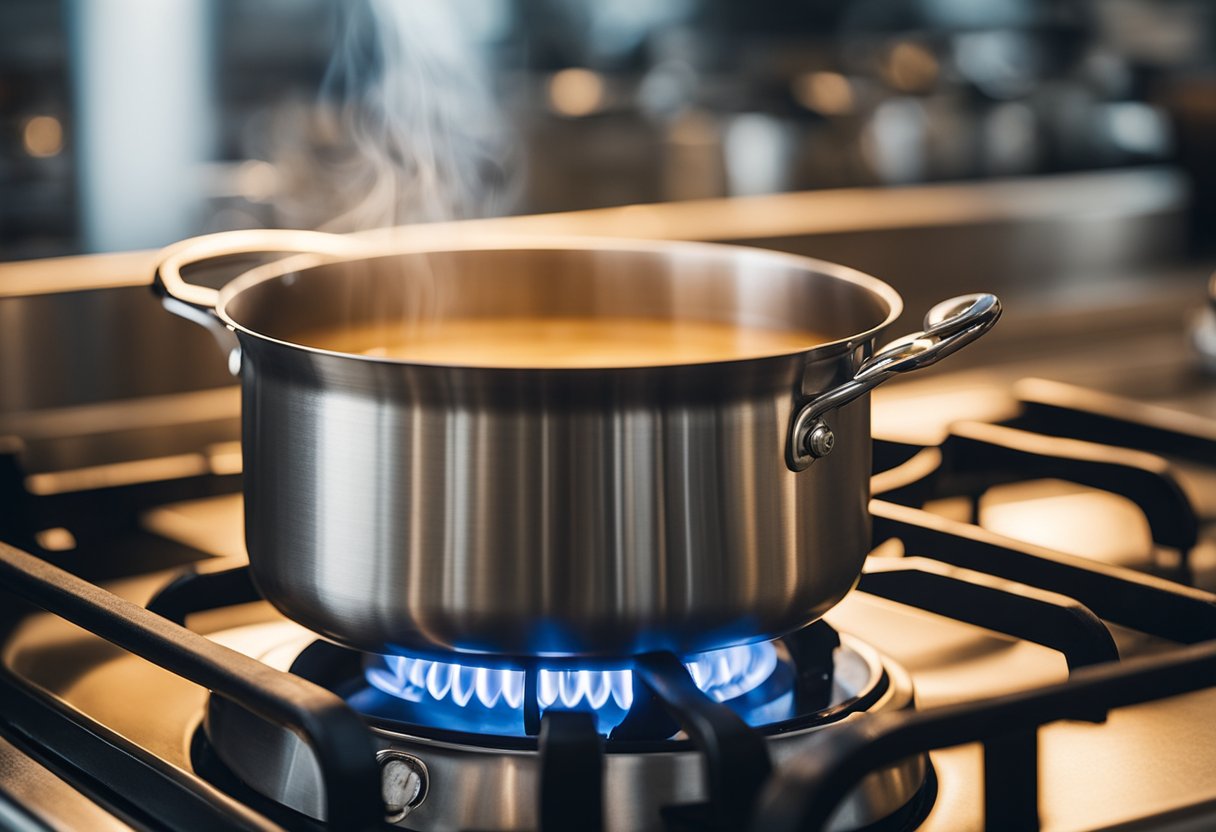
After reheating your gravy on the stove, it’s time to serve it. Reheated gravy can be served with a variety of dishes, including mashed potatoes, biscuits, and roasted meats.
When serving reheated gravy, it’s important to portion it out properly. You don’t want to serve too little or too much gravy with your dish. As a general rule, aim for about 1/4 to 1/2 cup of gravy per serving.
If you’re serving gravy with mashed potatoes, consider making a well in the center of the potatoes and pouring the gravy into it. This will help prevent the gravy from running off the potatoes and onto the plate.
During Thanksgiving dinner, gravy is an essential part of the meal. When reheating gravy for Thanksgiving, make sure to plan ahead and allow enough time for the gravy to heat up properly.
You don’t want to be rushing to reheat gravy at the last minute while your guests are waiting to eat.
If you have leftover gravy, consider using it in recipes that call for gravy, such as shepherd’s pie or pot pie. Reheated gravy can also be used as a base for soups and stews.
Remember, reheated gravy should be served immediately after reheating. It’s not recommended to reheat gravy multiple times, as this can increase the risk of foodborne illness.
In conclusion, reheated gravy is a delicious addition to many dishes, and can be served with a variety of foods.
Just make sure to portion it out properly, plan ahead for Thanksgiving dinner, and use leftover gravy in recipes or as a base for soups and stews.
Frequently Asked Questions
How can I safely reheat gravy on the stove?
To safely reheat gravy on the stove, you should heat it to an internal temperature of 165°F (73.9°C), which is the temperature at which harmful bacteria are destroyed.
Use a food thermometer to check the temperature of the gravy before serving. Also, make sure to reheat the gravy within two hours of removing it from the refrigerator.
What’s the best way to reheat gravy without it separating?
The best way to reheat gravy without it separating is to reheat it slowly over low heat, stirring frequently. This will help distribute the heat evenly and prevent the gravy from breaking or becoming lumpy.
You can also add a small amount of liquid, such as chicken or beef broth, to the gravy to help keep it smooth and creamy.
Is it okay to reheat gravy made with cornstarch on the stove?
Yes, it is okay to reheat gravy made with cornstarch on the stove. However, you should be careful not to overheat the gravy, as this can cause the cornstarch to break down and the gravy to become thin and watery.
To avoid this, reheat the gravy slowly over low heat, stirring frequently, and add a small amount of liquid if necessary to keep it smooth and creamy.
What’s the recommended temperature for reheating gravy on the stove?
The recommended temperature for reheating gravy on the stove is 165°F (73.9°C), which is the temperature at which harmful bacteria are destroyed. Use a food thermometer to check the temperature of the gravy before serving.
Can I reheat frozen gravy on the stove?
Yes, you can reheat frozen gravy on the stove. However, you should thaw the gravy in the refrigerator overnight before reheating it on the stove.
Once the gravy is thawed, reheat it slowly over low heat, stirring frequently, until it reaches an internal temperature of 165°F (73.9°C).
How do I thicken gravy when reheating it on the stove?
To thicken gravy when reheating it on the stove, you can add a small amount of cornstarch or flour to the gravy and whisk it in thoroughly.
Alternatively, you can mix equal parts of butter and flour (known as a roux) in a separate pan and whisk it into the gravy. Just be sure to whisk the gravy constantly as it thickens to prevent lumps from forming.


